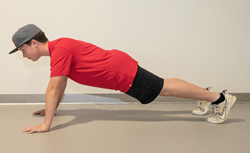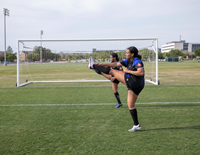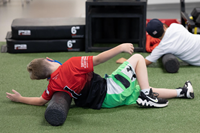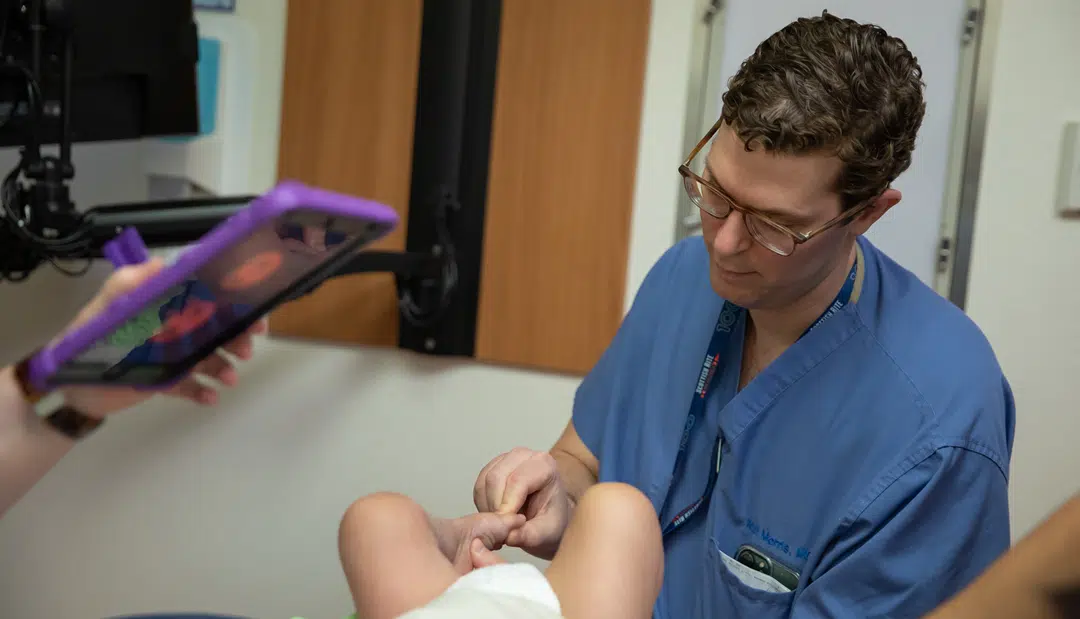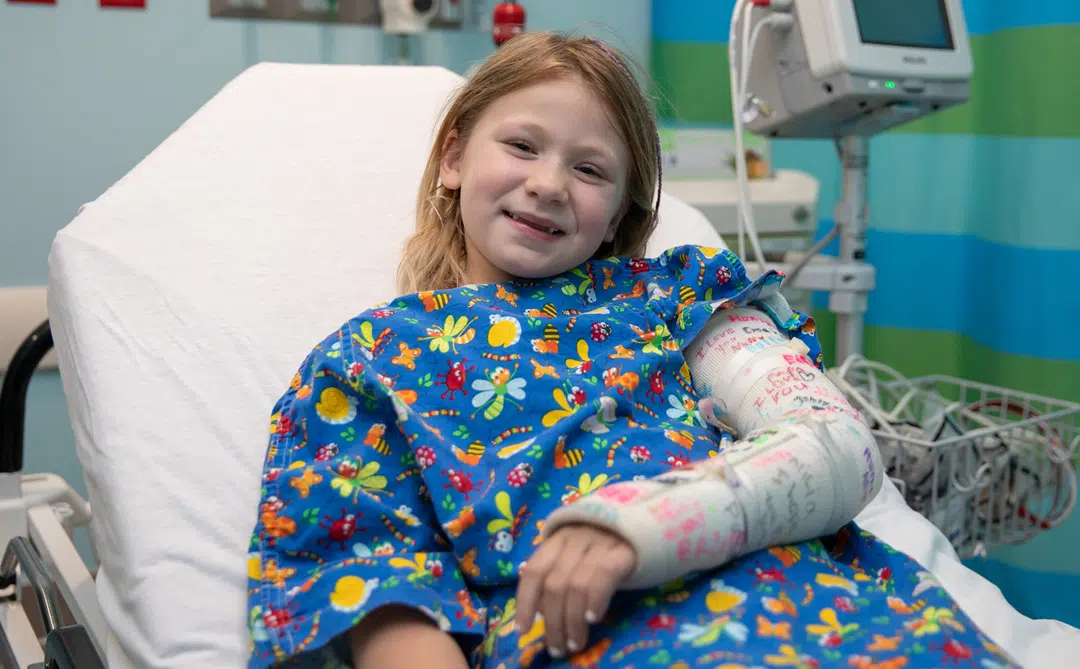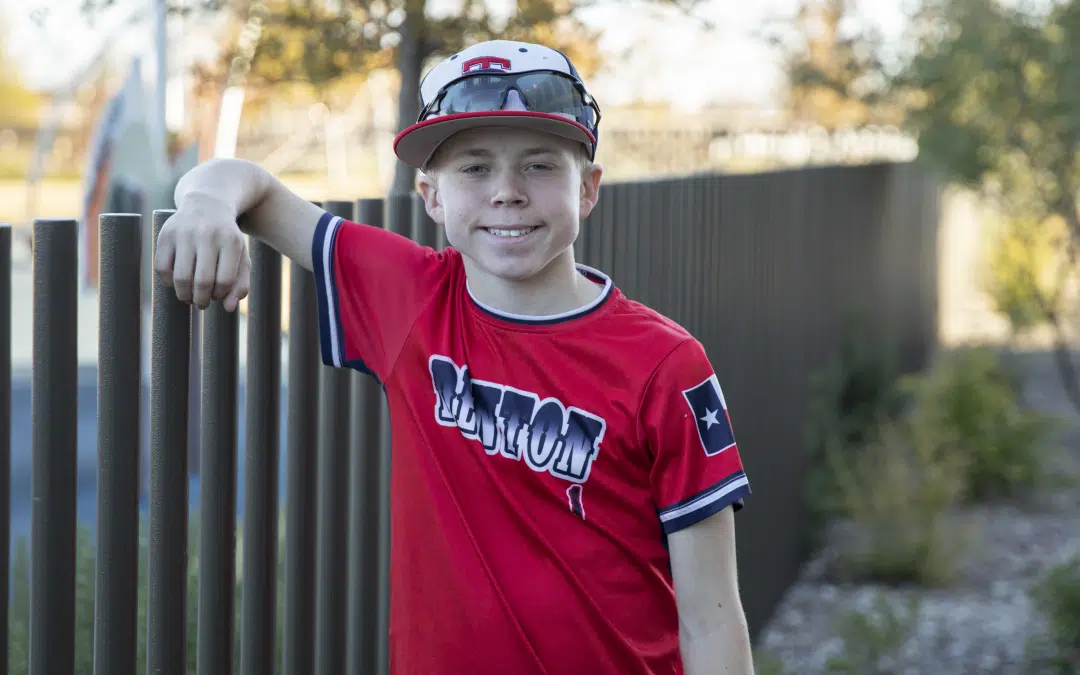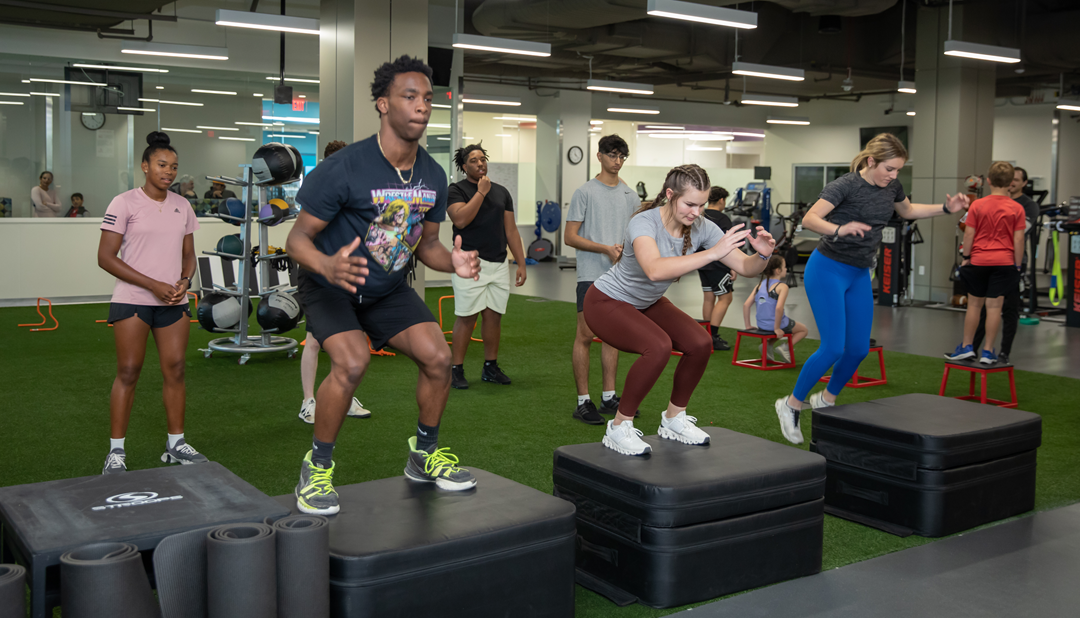
What’s in an ACL Injury Prevention Program?
In a study conducted by members of Scottish Rite for Children’s sports medicine research team, we have found that one in five parents are not aware of injury prevention programs that can reduce the risk of anterior cruciate ligament (ACL) injuries. This is alarming because studies show that these injuries can take an athlete out of sports for at least nine to 12 months and increase the risk of a second injury and knee problems as an adult. Many say they would participate in these programs if they knew how. Here are three elements of day-to-day training that align with sport-related injury prevention and can be implemented individually or as a team.
- Wake Up Your Brain and Muscle Connection
This step is called muscle activation and is focused on waking up small but very important muscles that maintain core stability during activity. From planks to squats, controlled movements that engage specific abdominal, spinal, shoulder and hip muscles are a key to a safe start for practice or competition. This step is rooted in principles of neuromuscular coordination, and with repetition, it is believed to improve stability and reduce injury risk during activities.
- Warm Up Your Muscles
Now that your brain and muscles are talking, you need to get the blood flowing into those muscles and move them through their full range of motion. Athletes are familiar with dynamic warm-up exercises like soldier walks and knee hugs, and learning ways to maximize these exercises can help improve the effectiveness and reduce the time needed for the warm-up. Make sure you’re warm before you take off at full speed or make large movements with force like jumping, throwing a long distance or kicking a ball.
Physical therapist Jessica Penshorn has put together a great easy to follow program for basketball players that combines mobility, activation and dynamic warm-up. Watch the short video, or read a summary of the program and download a handout here.
- Wind-down
After the training or competition session is over, abruptly stopping can leave muscles confused and angry. Post-activity recovery strategies like foam rolling, contrast baths and gentle stretching can reduce the onset of muscle soreness and setting the body up for a quick turnaround to activity the next day.
Email bridgeprogram@tsrh.org to sign up for our Athlete Development program for group training sessions that use all of these strategies to build solid foundations and strength, power and speed for high performance.
If you want to learn more about injury prevention programs for your young athlete, check out these resources:
- Download the FIFA 11+ Manual an official publication of the Fédération Internationale de Football Association (FIFA).
- Dynamic Warm-Up (scottishriteforchildren.org)
- Scottish Rite for Children Activation Exercises – Youth / Advanced
- Parental Awareness and Attitudes Towards ACL Injury Prevention Programs in Youth Athletes: Original Research | Journal of the Pediatric Orthopaedic Society of North America (jposna.org)*
*Sparagana, P., Selee, B., Ellis, H., Ellington, M., Beck, J., Carsen, S., Crepeau, A., Cruz, A., Heyworth, B., Mayer, S., Niu, E., Patel, N., Pennock, A., VandenBerg, C., Vanderhave, K., Williams, B., & Stinson, Z. (2023). Parental Awareness and Attitudes Towards ACL Injury Prevention Programs in Youth Athletes: Original Research. Journal of the Pediatric Orthopaedic Society of North America, 5(4).


